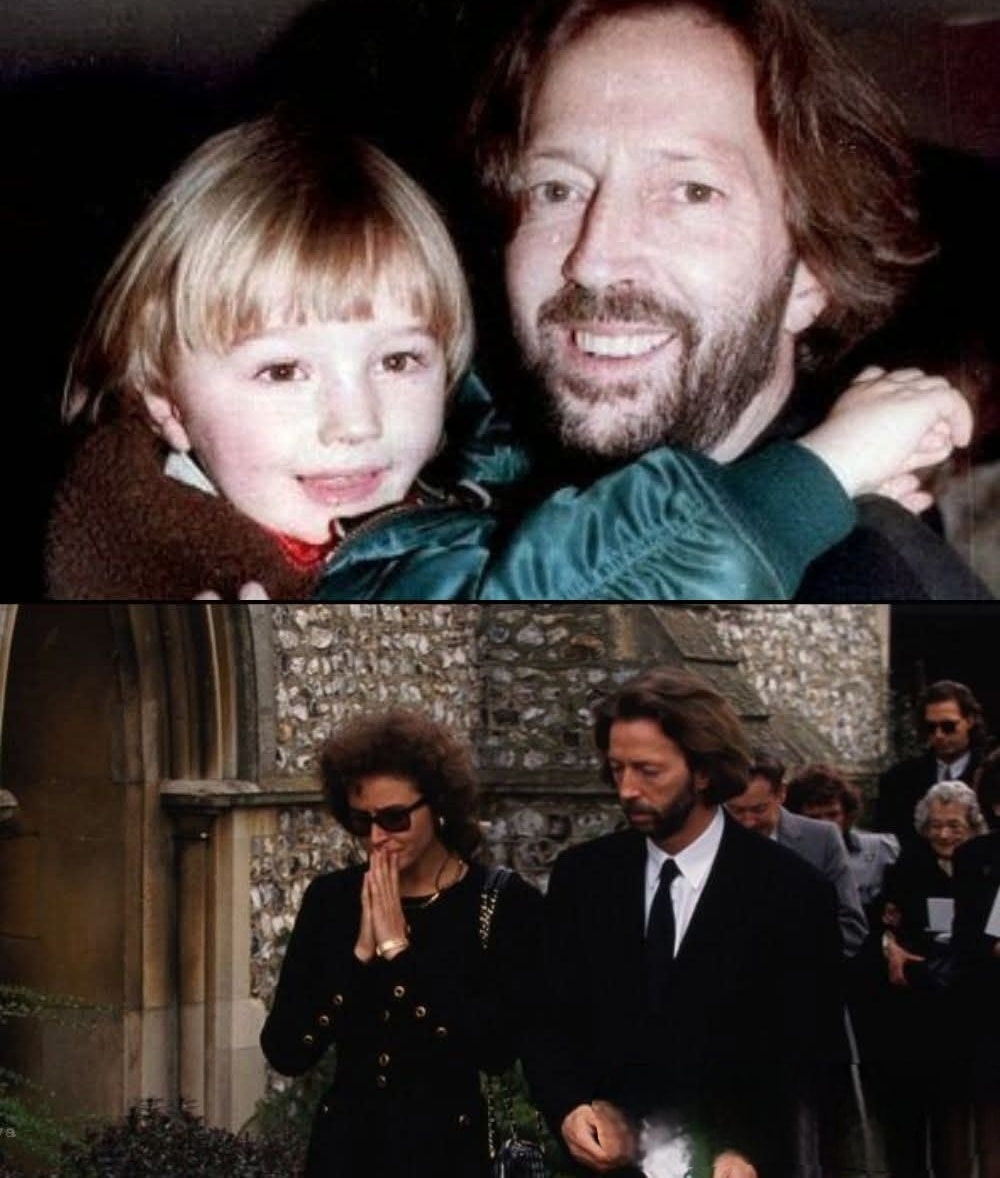The Unbearable Silence: How Tragedy Forged Eric Clapton’s Anthem of Grief

The first photograph is a cruel testament to the beauty that was lost. It captures a moment of pure, blinding happiness: a famous musician and his bright, beautiful little boy. Conor Clapton was the sun in his father’s sometimes turbulent sky. The bond between Eric Clapton and his four-year-old son, though born outside of marriage, was intensely real and palpable in their joyful, shared smiles. Life, in that innocent snapshot, felt perfect, a promise of endless tomorrows.

Then, in an instant, that light was extinguished. The fall from a 53rd-floor window of a New York skyscraper didn’t just break a life; it shattered a father’s world. The speed of the tragedy was matched only by the depth of the subsequent pain.
Fame Means Nothing
The bottom image captures the raw, unbearable aftermath: Eric and Conor’s mother, Lori, walking from the funeral service. Their faces are masks of profound, crushing sorrow. In that moment of finality, the trappings of celebrity and fame meant absolutely nothing. The wealth, the adulation, the musical genius—all were utterly powerless against the reality of a small, empty coffin.

The tragedy pushed Clapton into an abyss of pain, a darkness so absolute it threatened to silence his music forever. The silence in his apartment, where Conor’s laughter used to echo, was unbearable.
Yet, from that profound abyss, a conversation was born.
A Whisper Across the Void

The song that emerged from the wreckage of his heart was “Tears in Heaven.” It wasn’t just a composition; it was a lifeline, a whisper of love and longing sent across the void between earth and heaven. The music became his catharsis, a desperate, beautiful attempt to make sense of the senseless.
The lyrics were agonizingly personal, yet universal in their articulation of parental grief: “Would you know my name / If I saw you in heaven? / How could I stand up here, if I didn’t know your name in heaven?”

“Tears in Heaven” wasn’t just a global hit that won multiple Grammy Awards; it was a painful, exquisite tribute. It became the anthem for countless parents who had also faced the incomprehensible loss of a child. For Clapton, performing it was both a ritual of remembrance and a form of necessary public penance—a way to keep the memory of the four-year-old boy he missed every single second alive.
This set of images—the brilliant light of the first, the devastating darkness of the second—serves as a brutal reminder of the fragility of life and the enduring, ferocious power of a father’s love. That love, broken but never destroyed, was forever immortalized in a heartbroken, timeless melody, proving that sometimes, the deepest pain creates the most enduring art.